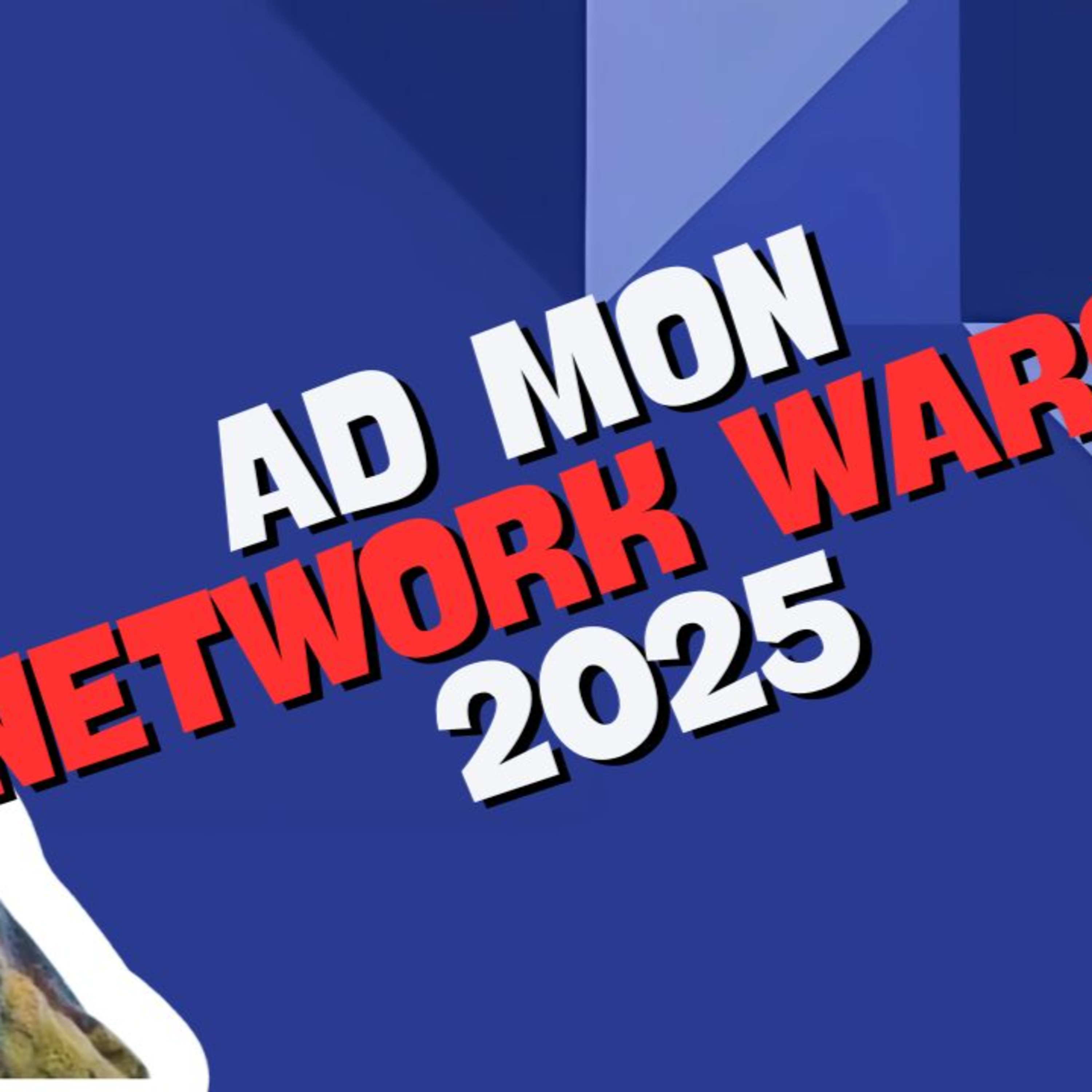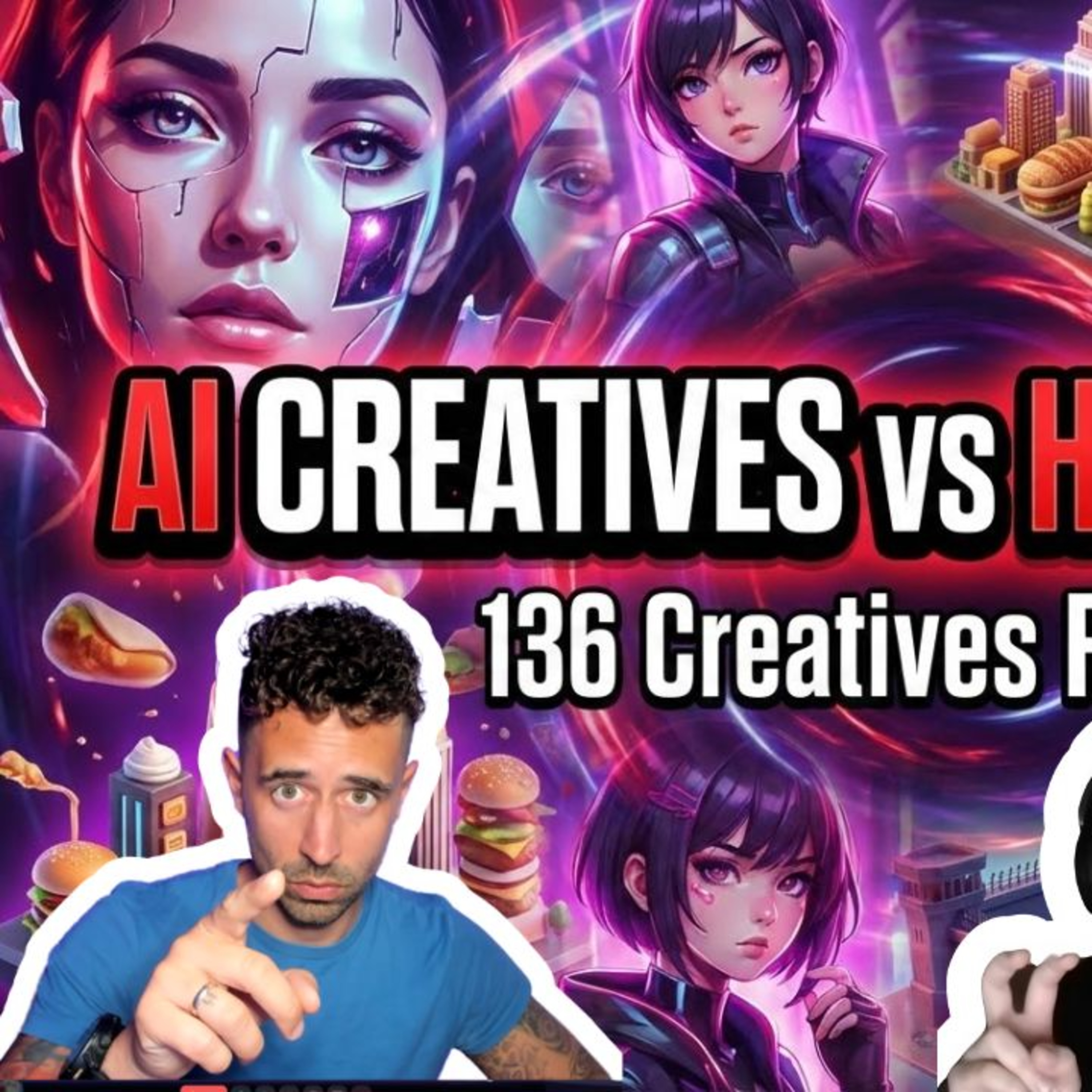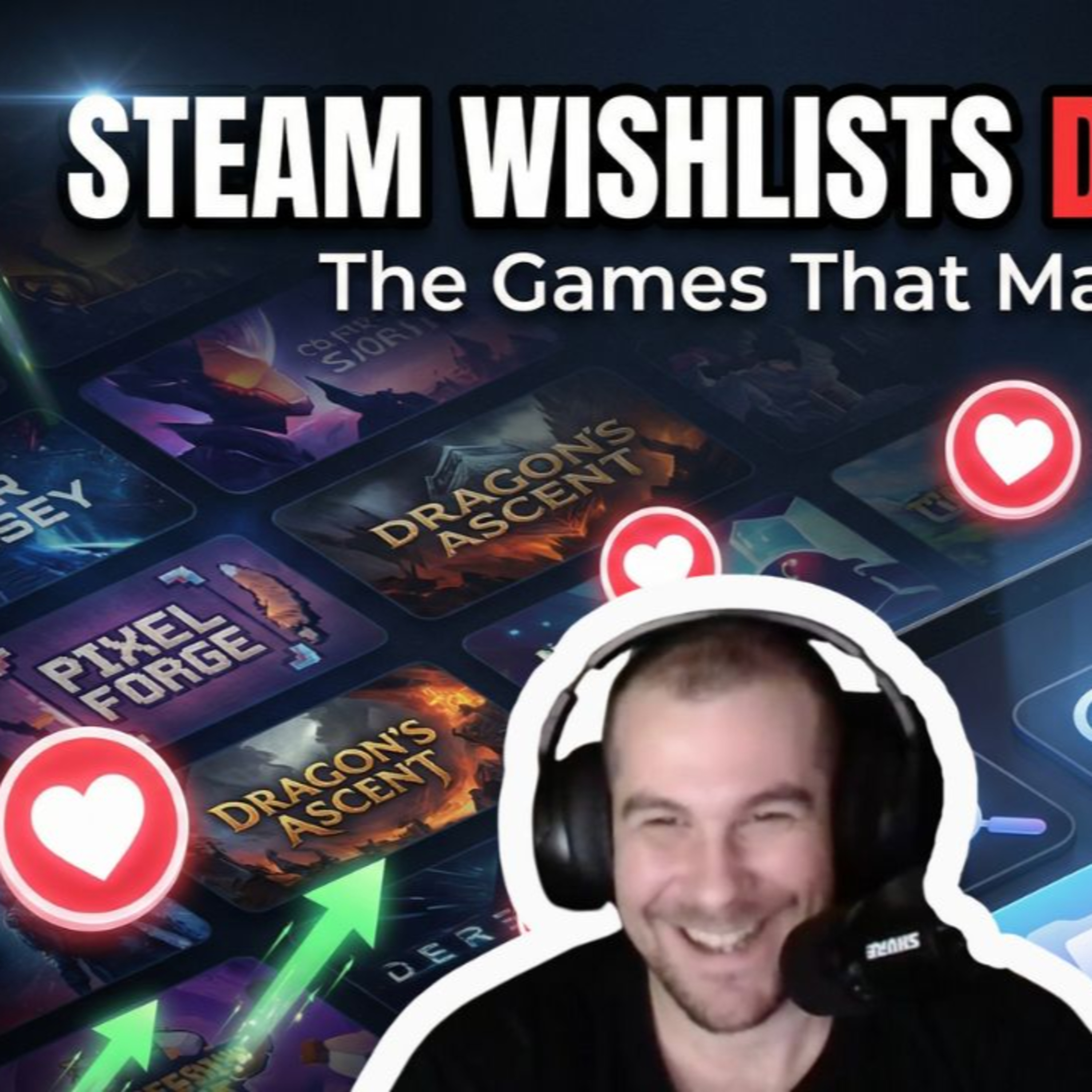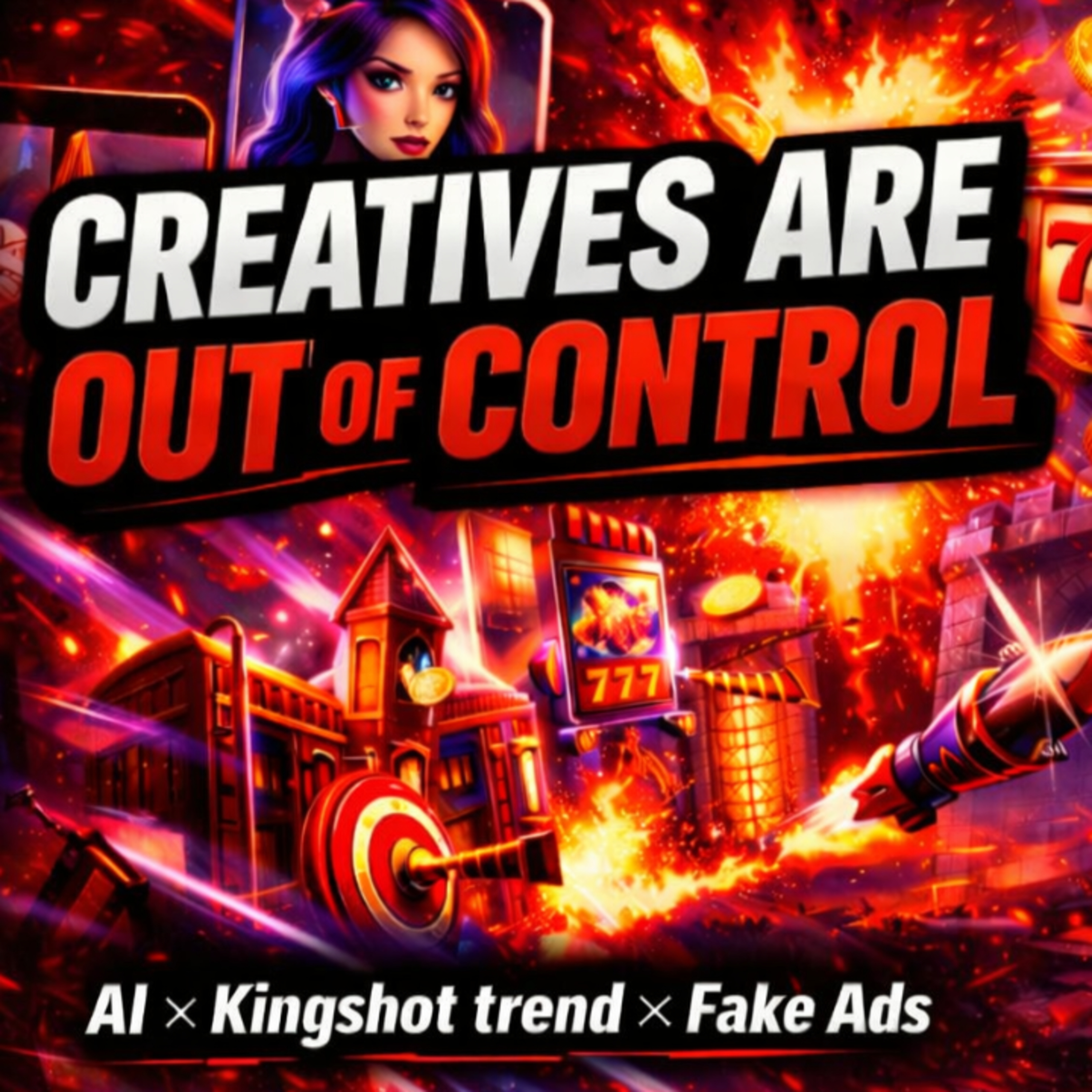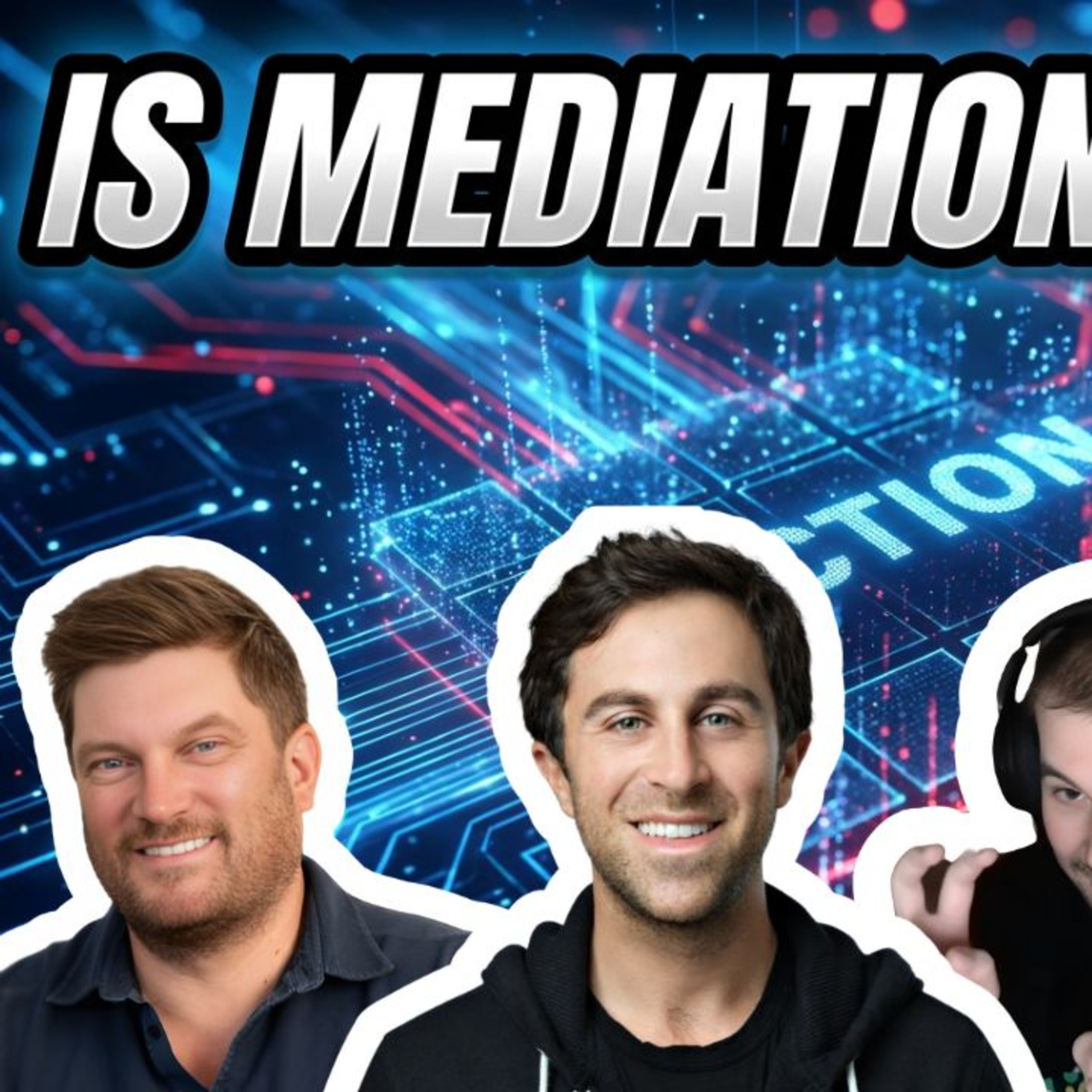The Walled Garden Stack: Why No New Mediation Platform Has Survived Since 2017 by Felix Braberg
In this solo episode, Felix Braberg cuts through the hype and breaks down what’s actually happening in mobile ad monetization networks in 2025. The real mediation market is cornered by AppLovin MAX, Unity LevelPlay, and Google AdMob—with upstarts like Amazon Publisher Services and Moloco making surprise moves. But even the biggest ad-revenue studios (Rollic, Habi) are running from ads to IAP-first strategies. ECPMs are down 20 percent from pandemic peaks, networks are harder to work with, and the “walled garden” is stronger than ever.
What’s inside:
Mediation Monopoly: AppLovin MAX now dominates mediation market share, with exclusive features like AdROAS and BlendedROAS campaigns locking in publishers. Unity and Google still matter, but the stack is closed and hostile to new entrants.
Amazon’s Banner Play: Amazon Publisher Services quietly became the top banner revenue source in the US and Europe, beating Google—but getting on the platform is a lottery. Last month, Amazon kicked 100 publishers off with no warning. TAM (Transparent Ad Marketplace) deals are lucrative, but rare.
Moloco’s Rise: Moloco, a DSP, is exploding with rumored $2.2B in 2025 spend, going direct to top publishers with its SDK. Publishers see 8–15 percent ARPDAU boosts on video and 20 percent or more on banners after adding Moloco. The secret? Once DSPs get big enough, they need direct supply, not just reselling.
Ad Monetization Shift: The biggest ad studios are pivoting hard—Habby’s Whittle Defender and Rollic’s latest puzzle hits (Whole People, KnitOut) now get as little as 11–20 percent of revenue from ads, compared to 50–50 splits just two years ago. IAPs are the future, and “remove ads forever” packages are everywhere.
Why ECPMs Are Down: ECPMs are 20 percent below 2021. Reasons include: post-pandemic demand crash, privacy updates (especially iOS), the loss of waterfall calls in mediation (bidding is the default), and “walled garden” platform control. It’s harder than ever to keep prices up or diversify your stack.
Key Takeaway:
If you’re not building your stack around AppLovin, Amazon, and Moloco, you’re missing where the real money flows. But even the best ad ops can’t beat macro headwinds—hybrid monetization is dying, and you need more IAP or you’ll be left behind.
Get our MERCH NOW: 25gamers.com/shop
---------------------------------------
This is no BS gaming podcast 2.5 gamers session. Sharing actionable insights, dropping knowledge from our day-to-day User Acquisition, Game Design, and Ad monetization jobs. We are definitely not discussing the latest industry news, but having so much fun! Let’s not forget this is a 4 a.m. conference discussion vibe, so let's not take it too seriously.
Panelists: Jakub Remiar, Felix Braberg, Matej Lancaric
Join our slack channel here: https://join.slack.com/t/two-and-half-gamers/shared_invite/zt-2um8eguhf-c~H9idcxM271mnPzdWbipg
Chapters
00:00 Introduction to Ad Monetization Trends
02:31 Shift from Ad Revenue to IAPs
05:07 ECPM Trends and Market Dynamics
07:22 Mediation Platforms Overview
09:42 Amazon Publisher Services: A New Player
13:30 Moloco: The Rising DSP Star
---------------------------------------
Matej Lancaric
User Acquisition & Creatives Consultant
https://lancaric.me
Felix Braberg
Ad monetization consultant
https://www.felixbraberg.com
Jakub Remiar
Game design consultant
https://www.linkedin.com/in/jakubremiar
---------------------------------------
Please share the podcast with your industry friends, dogs & cats. Especially cats! They love it!
Hit the Subscribe button on YouTube, Spotify, and Apple!
Please share feedback and comments - matej@lancaric.me
Press play and read along
Transcript
Speaker 1 By my estimates, I think the daily global mediation markets facilitate between 38 million to 38 to 50 million payouts per day in publisher earnings.
Speaker 1 So, the main mediation player still today is Atlab and Max, Unity Level Play, Google AdMob, and then you have the two other ones, which is DTX Fairbit and ChartBoost.
Speaker 1 They have a product called Helium. So, the interesting things here is that
Speaker 1 these main players in the mediation space on mobile hasn't changed at all since pretty much 2017 or something like that.
Speaker 1
It's 4 a.m. and we're rolling the dice.
Mate drops knowledge made of gold and ice. Felix with ads making those coins rise.
Jack up designs, worlds chasing the sky.
Speaker 1
We're the two and a half gamers, the midnight crew. Talking UA adverts and game design too.
Mateish, Felix, Shaku, bringing the insight. We're rocking those vibes till the early daylight.
Speaker 1
But K U A master eyes on on the prize. Tracking data through the cyberspace skies.
Felix stacks colours like a wizard in disguise. Jackups crafted realms, lift us to the highs.
Speaker 1
Two and a half gamers talking smack. Slow hockey sick, got your back.
Ads are beautiful, they like the way. Click it fast, don't delay.
Uh-huh.
Speaker 1 Uh-huh.
Speaker 1 Uh-huh.
Speaker 1 Uh-huh.
Speaker 1 Uh-huh.
Speaker 1 Uh-huh.
Speaker 1 Uh-huh.
Speaker 1 Hello everyone and welcome to yet another fantastic solo episode of the Two and a Half Gamers Podcast where you can stay two and a half steps ahead of the mobile gaming industry.
Speaker 1 So as you can see today is another solo episode which means we're going to be focusing on something ad monetization related because after I did the last one of these a couple of weeks ago you guys said you really liked it.
Speaker 1 So I wanted to expand on that and do another solo episode so what last time when i was alone i spoke most about the ad placements that i've seen to work a lot lately so what i wanted to do now was shift the gears a bit more and talk about the other side of ad monetization so that is how networks are performing overall so far in 2025.
Speaker 1 So I made you guys a little deck.
Speaker 1 I think we'll only have about 10 or 15 minutes minutes of talk, but hopefully by the end of this, the aim is that you kind of will know what the things that I'm excited about on the earnings side from the different networks currently so far in 2025.
Speaker 1 So, you know what networks to keep an eye out for and you know what networks to work with.
Speaker 1 The first thing that I'm starting to notice so far in 2025 is that there's a lot of classic kind of ad monetized heavy publishers that are kind of taking a step away from using ads as a major monetization
Speaker 1 tool. The most interesting things is that when we were doing the reviews on this channel of Whittle Defender by Habby, which is traditionally a
Speaker 1 yeah, Habby is best known for like Survivor.io or Archero, where the monetization is actually 50-50, so 50% ads and 50% IAPs.
Speaker 1 What's interesting here is that on Whittle Defender, and this has kind of been a trend with Habby for the last year, where they're moving more and more away from this hybrid monetization monetization split in their games.
Speaker 1 And they're actually moving more and more into hard, more like mid-core or casual games where the monetization is actually tilted more to IAPs.
Speaker 1 So on Whittle Defender, only about 11 or 12% of the total monetization mixes actually comes from their rewarded ads, and they've completely abandoned interstitial ads.
Speaker 1 What's even more interesting is that Rollic,
Speaker 1 which is a brand or a studio that's synonymous with ad revenue because they had their big rise during the hyper-casual era.
Speaker 1 And the last two games that they've brought out, Whole People and KnitOut, which has been their last two puzzle hits, have had probably the lowest amount of ad revenue of any of their titles.
Speaker 1 I estimate anywhere between 15 to 20 percent of those of the revenues earned in those titles are actually coming from ad revenue. So this is quite interesting.
Speaker 1 So you have two of the main kind of studios in the world that used to be synonymous with ad monetization and ad revenue taking a step away towards IAP revenue. So
Speaker 1 from my perspective, I think there's a couple of things that's behind this shift from ad revenue to IAP revenue.
Speaker 1 And one of the main ones is that for the last two years, ad monetization has gotten absolutely clobbered in terms of overall ECPM. So
Speaker 1 as a rule of thumb, or what I usually say, ECPMs right now are about 20% lower, I would say, across the board to what they were during the COVID times.
Speaker 1 So there's a couple of things behind this, right?
Speaker 1 So COVID times, it was just a silly season because ECPMs were so high because people were forced to spend a lot of time on mobile because they had nothing to do.
Speaker 1 Then you also have a bunch of privacy changes, which I've changed, particularly on iOS, which has decreased ECPMs.
Speaker 1 And then also you have the shift inside of mediation platforms where essentially you used to have a setup where you had hybrid setup where you had both bidders and ad placements in terms of waterfall calls.
Speaker 1 And when you completely remove the waterfall calls, there's nothing that really keeps the overall
Speaker 1 price in the average mediation stack high. So usually what you have happen to see what happens over time is that ECPMs tend to decrease over time when you have majority of the revenue on
Speaker 1 bidding and that's kind of the trend that we're seeing oh across the board in all mediation platforms but one of the interesting things here is that these two studios are moving away from ad monetization and probably the interesting thing from habby here that you also see on caby barrago and our chero2 is that they're also bundling a lot into
Speaker 1 kind of their iap sales that actually removes all the ads. So, for example, if you pay for something for 15 pounds or 15 euros or 15,
Speaker 1 then actually you remove ads forever, including rewarded ads.
Speaker 1 Thing to remember here as well,
Speaker 1 mediation platform, how they're kind of set up is that they're built to be walled gardens, right?
Speaker 1 So, Level Play, Google, and App Loving, they basically control the networks that we're able to work with, which basically means that the demand is kind of controlled.
Speaker 1 So, this is a list of all the networks that are currently available in the mediation platforms. On the left is LevelPlay, on the right is Applevin Max.
Speaker 1 These are kind of some of the main networks, but in kind of a big overview on what's actually going on in the mediation market as a whole,
Speaker 1 by my estimates, I think the daily global mediation market facilitates between 38 million to 38 to 50 million payouts per day in publisher earnings.
Speaker 1 So the main mediation player still today is AppLab and Max, Unity Level Play, Google AdMob. And then you have the two other ones, which is DTX Fairbid and ChartBoost.
Speaker 1 They have a product called Helium. So the interesting things here is that
Speaker 1 these main players in the mediation space on mobile hasn't changed at all since pretty much 2017 or something like that. The only one that used to be on here was Mopub, which was owned by Twitter.
Speaker 1 And the interesting thing here is like, this is a kind of a cornered market to say that there's no new entrants into this market because essentially Google kind of controls this space by giving by controlling who they give access to for Google bidding.
Speaker 1 So, for example, if I'm a new mediation platform that wants to enter this market, it's going to be very hard for me to get Google bidding because essentially they control who you work with and it's a bit of a chicken and egg problem.
Speaker 1 So networks to be able to connect to a new mediation platform, they want to be assured that they can get high amounts of demand that basically plugs into their new mediation platform.
Speaker 1 And if you can't guarantee that, then you won't basically get any development time from the developers to actually build out the demand side of this.
Speaker 1 So it's always a kind of cat like chicken and egg problem where you it's really hard for new entrants to kind of break into this space.
Speaker 1 So as you can see by some market estimates that I've been doing, so Apple and Macs is absolutely dominating both the Android and the iOS mediation market share.
Speaker 1 Crazy how much they've been able to grow. And basically
Speaker 1 my main thoughts behind this is because basically Macs is the only mediation platform that gives you access to Ad ROAS and blended ROAS campaigns, but only if you're on their mediation platform.
Speaker 1 So I can still run Ad ROAS or Ad ROAS campaigns on Unity and Google, even though if I don't mediate with those platforms, but AppLoven was the only one that kind of pushed that through to be one of the main things that is a value add from being on App Love in Max.
Speaker 1 So
Speaker 1 what's going on here in terms of the largest networks? So here's a list. of the overall largest networks I saw in terms of share revenue across my clients in November to December 2024.
Speaker 1 So that's last Christmas, so about six months ago. So let's see what's actually going on here.
Speaker 1 As most of my clients have been on AppLoV and Macs, this is basically very Macs-heavy data that's coming in here.
Speaker 1 But you can see, like in the top, it's pretty much dominated by AppLoV and Google and Meta.
Speaker 1 The most interesting thing here is that on banners right now, the biggest source of demand in the world is now, or in Europe and in the US, is actually now Amazon publisher services.
Speaker 1 So, right here, this is not volume, this is a revenue, right?
Speaker 1 So, the most interesting thing here is that Amazon Publisher Services has surpassed Google as the number one source of banner revenue in the States and in Europe.
Speaker 1 The interesting thing here is that Amazon Publisher Services controls how many publishers they're currently working with. So, what's interesting here is that Amazon,
Speaker 1
they basically entered the market a couple of years ago into mobile. But what they did was they did a controlled launch.
So you had to apply to basically get access to Amazon publisher services.
Speaker 1 And what actually happened a couple of weeks ago was that they kicked off about 100 publishers from their platform without a warning.
Speaker 1 No one really knows what Amazon right now is doing or why they kicked these publishers off. It's a bit hard to say why.
Speaker 1 But essentially, it's kind of a frustrating network to work with because, A, you might not be approved to work with them, but if you do, it's usually a good thing.
Speaker 1 So, Amazon Publisher Services, which is typical to Amazon, their main benefit from working on this network is that you can launch something called
Speaker 1 Amazon TAM or Transparent Ad Marketplace.
Speaker 1 So, what TAM allows you to do is actually call up the largest DSPs or demand sources inside of Amazon Publisher Services and work with them directly on a IO deal, which means that the typical price that Amazon charges, I think, is about 17 or 36% for actually showing ads from other demand partners through their SDK.
Speaker 1 But what actually happens is that if you work with them direct, basically they cut that fee to near zero.
Speaker 1 So the interesting thing here is that Amazon has been probably for the clients that I'm using it on, one of the strongest networks in the last two or three years on banners.
Speaker 1 But basically, they control who you work with, so it's actually really hard to get on that platform. Super unfair, super frustrating.
Speaker 1 Even more frustrating because in the last couple of weeks, they basically just cancelled a bunch of the publishers, and no one really knows what's going on there.
Speaker 1 I used to be able to speak to them on a call or things like that, but I haven't been able to do that for years, and no one really knows what's going on there.
Speaker 1 So it's a bit upsetting that one of the largest networks is being kind of so untransparent on who they work with and why, which is a bit sad, which makes this kind of, yeah, working with this network kind of hard.
Speaker 1 So one of the other networks I also wanted to talk to about or that I'm seeing quite a lot of interesting things come out of is Moloco.
Speaker 1 So I'm not being paid anything for saying this, but essentially Moloco has been one of the latest incumbents that came into the space.
Speaker 1 And if we look at the rankings here again, again, you can see that
Speaker 1 already here,
Speaker 1
just during Christmas time, Moloko is one of the largest banner providers on iOS and one of the largest rewarded ad providers on iOS. And the same thing on Android.
So you can see it here.
Speaker 1 So the interesting thing about Moloka is it's a DSP, right? So what that means is that DSPs traditionally buy only inventory with algorithms from SSPs.
Speaker 1 And the thing about SSPs is that they don't have any direct relationship with you as a publisher.
Speaker 1 What they actually do is they buy inventory secondhand via networks that have a direct SDK link with you. So these are typically the sources that you can see in the AdApps.txt file.
Speaker 1 So resellers, right?
Speaker 1 So usually DSPs don't like to go direct because it's not part of their business model.
Speaker 1 So what Maloka has actually started to do now is basically start to go direct to publishers because they've gotten so big in terms of spend.
Speaker 1 I think I heard some rumors that it's rumored that Maloco will have about $2.2 billion worth of spend in 2025, which is up from, I think, 1.1 last year. So it's growing like wildfire.
Speaker 1 So whatever they're doing on the US side, it's working extremely well.
Speaker 1 But basically what happens is when you hit a certain mark as a DSP, that means that you can't simply get enough demand anymore or supply anymore to satisfy your demand.
Speaker 1
So you actually have to start going direct. So this is exactly what Maloco started to do about two years ago.
Basically, they launched their SDK,
Speaker 1 and it was also a little bit like Amazon is doing. So they had a select group of publishers that they wanted to work with.
Speaker 1 Traditionally, you want to work with probably the top 100 or top 200 publishers on mobile because that gives you very good coverage of the users that you kind of want to get access to.
Speaker 1 So Maloco recently
Speaker 1 announced that they will allow anyone basically just to sign up on their web page. So basically anyone now can sign up and use Maloco in their ad stack.
Speaker 1 And it's kind of been one of the best networks to add for me in my clients. Typically when you add Maloco
Speaker 1 Usually where you see overall on videos about an 8 to 15% increase on ad Arctow basis. And sometimes on banners, they take up to 20% increases on iOS or Android, but I've seen even bigger.
Speaker 1 So, probably Maloka has been one of the most interesting surprises for me in this last year of an example of a DSP being so big that they actually have to go direct.
Speaker 1 So, that sums it up for me.
Speaker 1 Basically, what I just wanted to talk about or reiterate here is that the two strongest networks that are kind of the newcomers is Amazon Publisher Services, which is extremely hard to work with, which is frustrating.
Speaker 1 And the other network that you can work with is Maloco, which is is one of the networks that has been growing the most lately.
Speaker 1 That sums it up for me today.
Speaker 1 If you want me to do any of these short episodes covering any topic that you want to know about, please write me in the comments and I will make a specific video on any ad monetization topics that you would like to know more about.
Speaker 1
So, this has been another very brief but hopefully interesting episode for you on ad monetization. And I hope to see you again next time.
Bye-bye.
